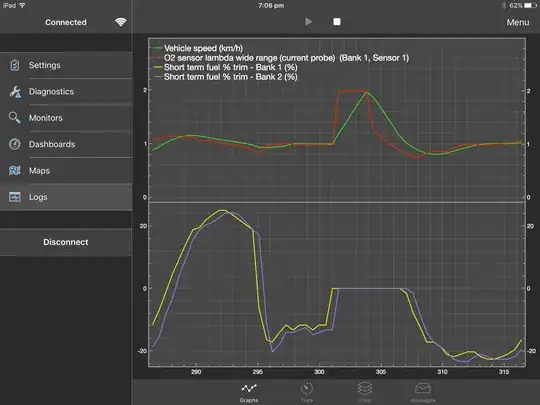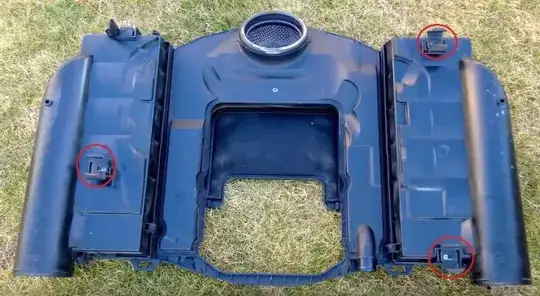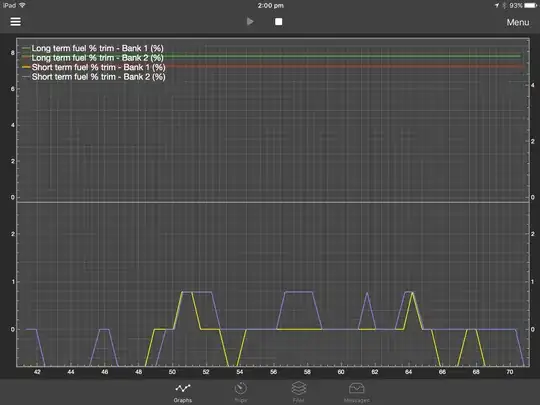I know narrowbands can go lazy with time, but what about widebands?
This is a sequel to the cold-start misfire mystery.
It turns out that we were looking at the wrong PID's for the front O2 sensor voltages, assuming they were narrowbands. Probing the wideband sensor PID's for Bank 1, Sensor 1 and Bank 2, Sensor 1 lambdas yielded a proper signal.
This 2009 Mercedes GLK 280 had an intake leak that was fixed by a mechanic. The LTFT's are now very close to zero (-0.8 %). The STFT's, however, are all over the jungle, cycling between -15 % and +20 % every 15-30 seconds.
What I have noticed is that the STFT's are following the wideband lambdas at idle, which cycle very slowly between 0.8 and 1.2 (11.76:1 - 17.64:1 AFR). Post-cat O2 sensor voltages are around 0.75 V, so rich as expected.
The reason why I'm seeing this car again is because of a CEL that manifests itself intermittently when coming to a stop at a traffic light:
P0171,P0174- System too lean
My hypothesis
- LTFT's are showing the system is airtight
- STFT's are cycling wildly because of the front wideband O2 signals cycling
- Widebands need to be replaced
Screenshots
Here are the DTC's and freeze frames
STFT's and Wideband lambdas at idle
This is before clearing the DTC's, but the behavior here didn't seem to change much after clearing them
Here is the throttle blip test (if I remember correctly)
Ignore the green line because it isn't Vehicle Speed and smoothing was turned on.











